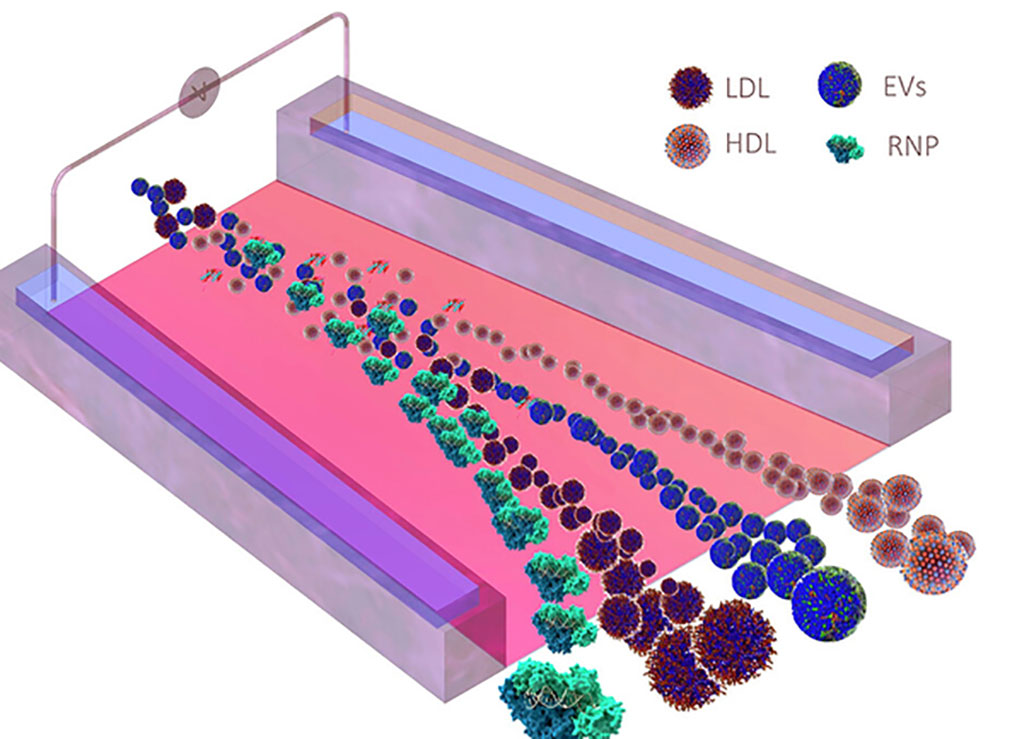New Minimally Invasive Cancer Diagnostic Device Eavesdrops On Cells’ Conversations
Posted on 26 Oct 2023
For a long time, scientists have understood that RNA (ribonucleic acid) serves as an internal messenger within cells, taking DNA's instructions to help the cells produce proteins. However, a recent discovery shows that specific kinds of RNA, termed "extracellular RNA" or exRNA, actually leave the cell. These exRNAs are enclosed in tiny carrier structures and travel through bodily fluids, acting like tiny informational messages in bottles. These exRNAs are incredibly valuable as they could hold early indicators for diseases like cancer, heart disease, and HIV. Detecting diseases via exRNA could be quicker, more effective, and cheaper than current techniques. The challenge, however, has been separating and interpreting these exRNAs, as existing methods like advanced filters and centrifuges haven't been very successful.
A team of scientists at the University of Notre Dame (Notre Dame, IN, USA) has created a groundbreaking device that uses an ingenious approach to 'eavesdrop' on cells’ conversations. This palm-sized device combines existing technologies and employs a mix of pH levels and electrical charges to segregate the exRNA carriers. The unique feature here is that each type of carrier has its own "isoelectric point," a particular pH level at which it has no positive or negative charge. Within the device, there's a seemingly simple stream of water flowing. But this stream is special. On the left side, the water is highly acidic, similar to grapefruit juice. On the opposite end of the stream, the water is extremely basic, with a pH similar to a bottle of ammonia. What's particularly remarkable about the device is its ability to generate this pH gradient in the stream without adding any chemicals, making it cost-effective and eco-friendly.

This gradient is made possible by a two-sided membrane that's powered by a custom-designed chip. This membrane divides the water into two types of ions: acidic hydronium ions and basic hydroxide ions, adding a different kind of ion to each side of the stream. As these acidic and basic streams converge, they form a pH gradient, much like how hot and cold streams form hot and cold sides with a gradient of temperature through the middle of the stream. The researchers ran the two devices in parallel and utilized machine learning to select the ideal pH range needed for separating the carriers.
What sets this approach apart is its effectiveness of the pH gradient in segregating the exRNA carriers floating in the stream. When they pass through the pH gradient, the different types of carriers form lines along their isoelectric points, making it easy to channel them into separate outlets. The researchers could obtain incredibly pure samples—up to 97%—using less than a milliliter of body fluids like blood plasma, saliva, or urine. Moreover, while the best current technologies take around a day to separate samples, this new device accomplished the task in just 30 minutes.
“Noncommunicable diseases are responsible for more than 70 percent of deaths worldwide, and cardiovascular disease and cancer are responsible for most of that number,” said postdoctoral fellow Himani Sharma who served as project lead. “Our technology shows a path to improving the way clinicians diagnose these diseases, and that could save a tremendous number of lives.”
Related Links:
University of Notre Dame













